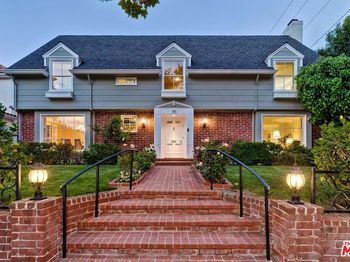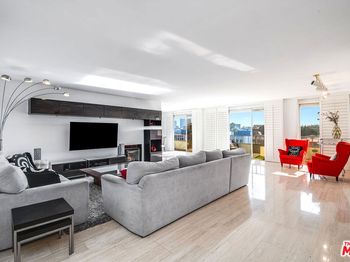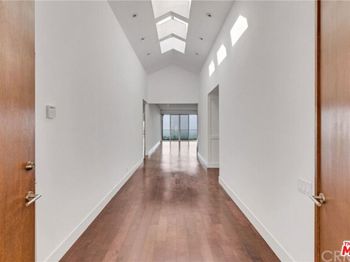About Beverly Hills
Perhaps the most famous neighborhood in the Los Angeles area, Beverly Hills is home to countless Hollywood celebrities and the uber-wealthy. It remains one of the most expensive housing markets in the nation. Beverly Hills is bordered on the north by Bel Air and the Santa Monica Mountains, on the east by West Hollywood, Carthay Circle and the Fairfax District of Los Angeles, and on the south by the Beverlywood.
On October 22, 1906, the community of Beverly Hills was declared open by the Percy H. Clark Co., managers of the tract of land. It was described as a “beautiful suburban residence between this city [Los Angeles] and Santa Monica.” The community was designed to allow the buyers to build a custom house on the land they purchased in the new development. The Rodeo Land and Water Company (Burton Green) decided to name it Beverly Hills after Beverly Farms in Beverly, Massachusetts. Prior to this, the land was known as the Hammel and Denker ranch, which was one of Southern California’s most fertile lands growing lima beans. It was purchased by a syndicate of Henry E. Huntington, C. A. Canfield, W G. Karckhoff, W. S. Porter, Burton M. Green, M. W. Whittier. The investment company marketed Beverly Hills as “between the city and the sea.” At the time, lots were selling for around $2,000 each.
In 1919, Douglas Fairbanks and Mary Pickford bought land on Summit Drive and built Pickfair. In 1921, they announced that they would build the home which they had been “dreaming” about in Beverly Hills. The movie colony was well entrenched by 1928 when Harold Lloyd, John Barrymore, Robert Montgomery and Miriam Hopkins built residences there.
In 1923, annexation to the city of Los Angeles was proposed, but faced opposition. Residents Mary Pickford, Will Rogers and others mobilized local voters against the plan. This fight for an independent city was arguably the first union of show business and politics in the United States. When Will Rogers became involved in the local city government the community received international advertising. In 1925, Rogers was given the title “Honorary Mayor of Beverly Hills,” becoming the first and, to date, only person so honored as such. The same year, the citizens of the city voted a $100,000 bond issue to purchase with Los Angeles, Santa Monica and Venice 385 acres for the building of UCLA. There were 96 miles of paved streets in the city limits by 1927. In 1928, the Beverly-Wilshire Hotel on Wilshire Boulevard between El Camino and Rodeo Drives, part of the old Beverly Hills Speedway, was completed. That same year, Greystone Mansion was completed by Edward L. Doheny, Jr., the only son and heir of wealthy oil man Edward L. Doheny. And in 1930, horses were banned in the City of Beverly Hills.
In the early 1930s, Santa Monica Park was renamed Beverly Gardens and was extended to span the entire two mile length of Santa Monica Boulevard through the city. At its Santa Monica and Wilshire corner, the Electric Fountain, a constant symphony of form and color at night, was installed, with a small sculpture at the top of a Tongva kneeling in prayer, homage to the heritage of Beverly Hills as a wellspring of fertility and abundance.
In April 1931 the new Italian Renaissance style City Hall was opened.
Beverly Hills contains some of the largest homes in Los Angeles County and the nation. These homes range from the extravagant and luxurious in size, to the more elegant and modern homes, and then to the many small duplex rental units and detached homes with less than 2,000 sq ft.
90210 is a ZIP code in Beverly Hills, made famous by the television series Beverly Hills, 90210, Dr. 90210, and because of the celebrity residents that reside in the area. Beverly Hills also has three additional ZIP codes based on the general area. These ZIP codes are 90211, 90212 and 90213. In 1983, the local weekly magazine “Beverly Hills 213″ debuted as the city’s first color ultra-luxury magazine.
Geography:
In spite of the city’s name, most residents live in the “flats” of Beverly Hills, a relatively flat land that includes all of Beverly Hills south of Sunset Blvd. The homes in the hills north of Sunset Boulevard have a much higher value than average homes in the rest of Beverly Hills, and the most expensive homes in Beverly Hills are all in the hills. Santa Monica Boulevard (and its parallell twin Little Santa Monica) divides the “flats” into two areas, locally known as “North or South of the tracks,” referring to the train tracks that were once used by the old Pacific Electric streetcar line that traversed Beverly Hills along Santa Monica Blvd. Homes south of Wilshire have more urban square and rectangular lots, generally smaller than those to the north. There are also more apartment buildings south of Wilshire Blvd than anywhere else in Beverly Hills, and the average home value south of Wilshire is the lowest in Beverly Hills.
Except for the Beverly Hills Hotel and the Beverly Hilton Hotel, all businesses and government offices in Beverly Hills are located south of Santa Monica Blvd. Nearby the Beverly Hills city limits, and sharing a border with Little Holmby Hills, is the famous Los Angeles Country Club.
Read More ▾The Commute
Travel Methods
To City CenterAvailable Properties
View all ⇢Beverly Hills Sales Data
Percentage change from latest quarter vs same time period previous year
Data compiled using 1st quarter 2019 data vs. same period from 2018
Median Sales Price
MEDIAN SALES PRICE

Demographics
- Filter by:
- Population
- Income
- Education
- Market Rents
Population by Age Level. Median Age 43.58. Households: 15,179.
In Thousand of Dollars. (Median Income: $102,089)
Population by Education Level
Fair Market Rents
Beverly Hills Schools & Education
Public & Private Institutions Of Learning
Education in the United States is provided by public, private and home schools. State governments set overall educational standards, often mandate standardized tests for K–12 public school systems and supervise, usually through a board of regents, state colleges, and universities. Discover the K12-powered public or private school that is best suited for your child's needs in the area.
Where To Drink, Dine, Shop, Relax & Recline
















































































































 By submitting information, I am providing my express written consent to be contacted by representatives of this website through a live agent, artificial or prerecorded voice, and automated SMS text at my residential or cellular number, dialed manually or by autodialer, by email, and mail.
By submitting information, I am providing my express written consent to be contacted by representatives of this website through a live agent, artificial or prerecorded voice, and automated SMS text at my residential or cellular number, dialed manually or by autodialer, by email, and mail.

